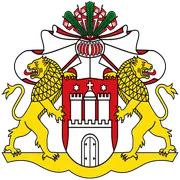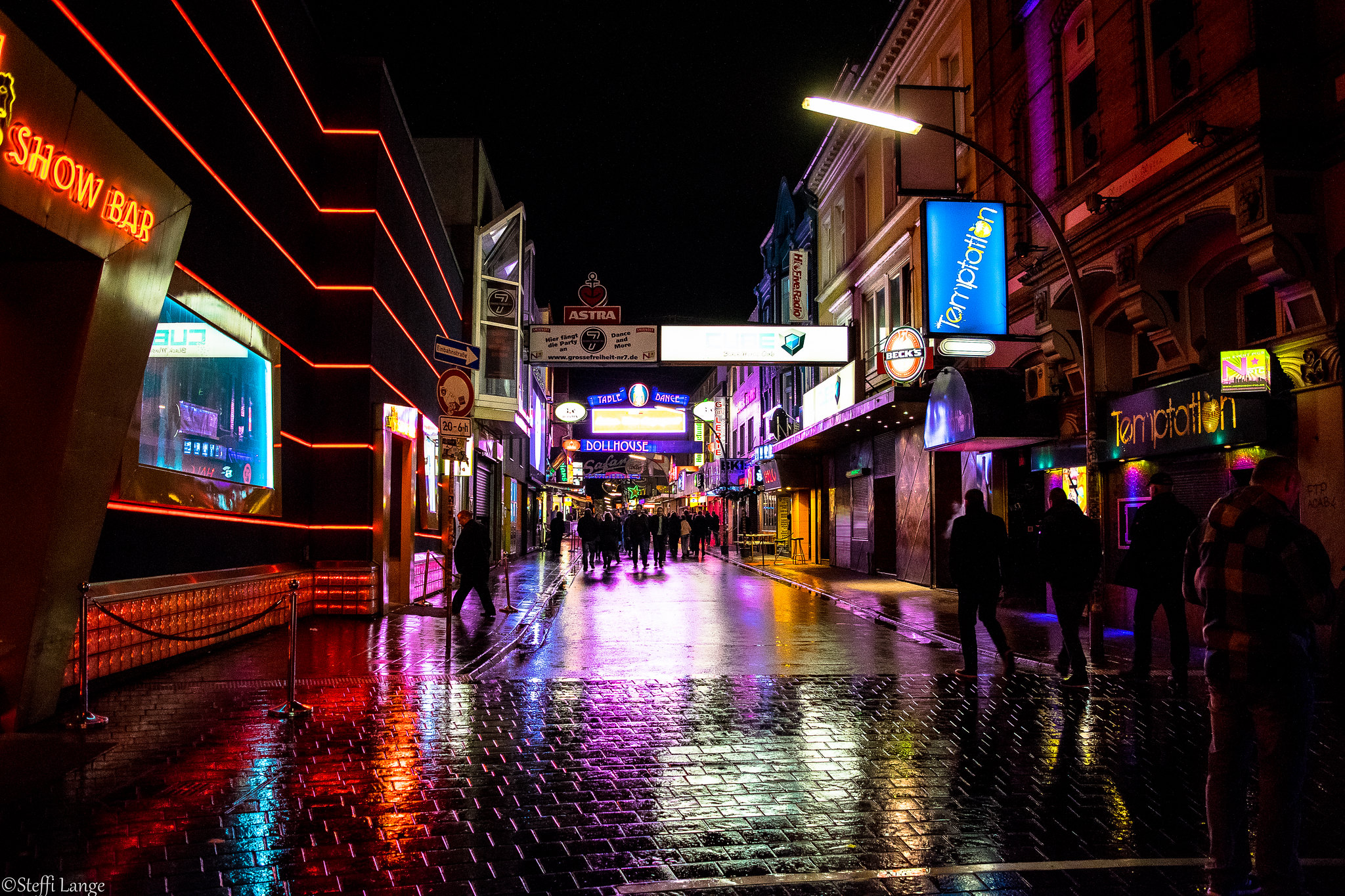Reeperbahn is Hamburg’s most famous street, located in the St. Pauli district. Known as the city’s red-light district, it has a long history as an entertainment hub and nightlife hotspot. The street stretches for about 930 meters and is home to numerous bars, clubs, restaurants, theaters, and adult entertainment venues. Originally a rope-making area in the 17th century, Reeperbahn transformed into a sailor’s entertainment district in the 19th century. Today, it attracts millions of visitors annually, offering a diverse mix of attractions ranging from music venues and cabarets to strip clubs and brothels. The Beatles famously performed here in their early years, contributing to the street’s legendary status in popular culture.
As the sun sets over Hamburg, a different kind of energy begins to pulse through the city’s veins. Nowhere is this transformation more apparent than on the Reeperbahn, the infamous street that cuts through the heart of Hamburg’s St. Pauli district. Known as Germany’s most notorious red-light district, the Reeperbahn is much more than just a haven for adult entertainment – it’s a vibrant nightlife destination that offers something for everyone.
The neon-lit stretch of the Reeperbahn comes alive as night falls, with an eclectic mix of bars, clubs, theaters, and live music venues opening their doors to revelers from all walks of life. One of the first stops for many visitors is the Davidwache, the iconic police station that has stood watch over the area since 1914. Its presence serves as a reminder that while the Reeperbahn is a place for fun and excitement, safety remains a priority.
Just a stone’s throw away from the Davidwache, music lovers can find themselves immersed in the rich history of Hamburg’s rock scene at the Indra Club. This unassuming venue holds a special place in music history as the site where The Beatles first performed in Hamburg back in 1960. Today, it continues to showcase up-and-coming talent, making it a must-visit spot for those looking to discover the next big thing in music.
For those seeking a more upscale nightlife experience, the Mojo Club is a popular choice. Located in a striking glass dome on the Reeperbahn, this stylish venue offers a mix of live music and DJ sets, with a focus on soul, funk, and jazz. The club’s unique architecture and sophisticated atmosphere make it a standout destination for both locals and tourists alike.
As you continue down the Reeperbahn, the famous Herbertstraße beckons with its red-lit windows and provocative displays. This narrow street, accessible only to those over 18, is the epicenter of Hamburg’s sex industry. While it may not be everyone’s cup of tea, it’s an undeniable part of the Reeperbahn’s identity and history.
For a change of pace, theater enthusiasts can catch a show at the St. Pauli Theater, one of Germany’s oldest playhouses. This historic venue offers a diverse program of plays, musicals, and cabaret performances, providing a cultural counterpoint to the more raucous entertainment found elsewhere on the street.
As the night wears on, party-goers looking to dance until dawn can head to Große Freiheit, a side street off the Reeperbahn that’s home to some of Hamburg’s most popular nightclubs. The legendary Kaiserkeller, another venue with Beatles connections, pumps out rock and indie tunes, while nearby Dollhouse caters to electronic music fans with its state-of-the-art sound system and impressive light shows.
No night on the Reeperbahn would be complete without a visit to the Zur Ritze, a dive bar that doubles as a boxing gym. This quirky establishment has been a local favorite for decades, offering visitors the chance to grab a drink and potentially witness an impromptu boxing match in the basement.
As dawn breaks over Hamburg, the Reeperbahn slowly begins to wind down. Late-night revelers make their way to the Fish Market, a Sunday morning tradition where party-goers mingle with early-rising locals to enjoy fresh seafood and live music – a fitting end to a night on Hamburg’s most infamous street.
The Reeperbahn may have a reputation that precedes it, but those who take the time to explore its many facets will discover a nightlife scene that’s as diverse and dynamic as the city itself. From live music and theater to cutting-edge clubs and quirky bars, the Reeperbahn offers a nocturnal adventure that’s uniquely Hamburg.The Reeperbahn, Hamburg’s infamous red-light district and entertainment hub, remains a vibrant and controversial part of the city’s identity. Known for its nightlife, music scene, and adult entertainment, it has evolved from its seedy past into a more diverse tourist destination. While still maintaining elements of its risqué reputation, the area now attracts a wider audience with its theaters, clubs, and restaurants. The Reeperbahn continues to be a symbol of Hamburg’s liberal attitude and a testament to the city’s ability to balance tradition with modern urban development, though it faces ongoing challenges related to gentrification and changing social norms.

